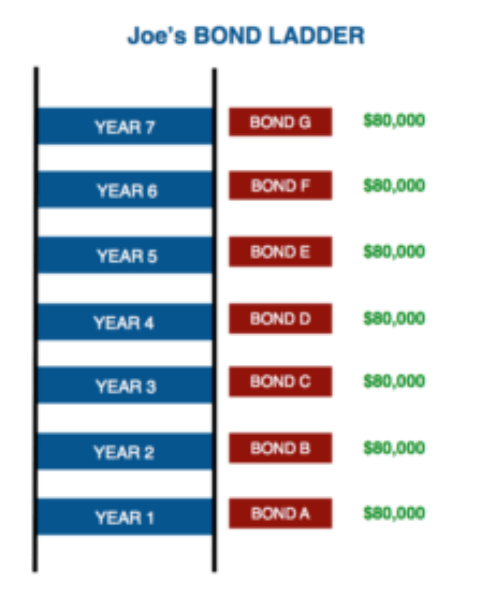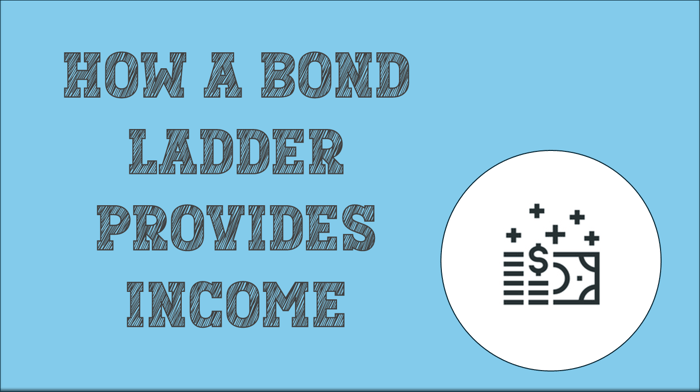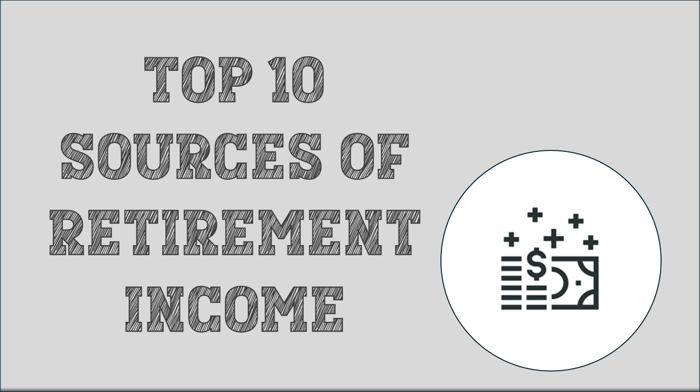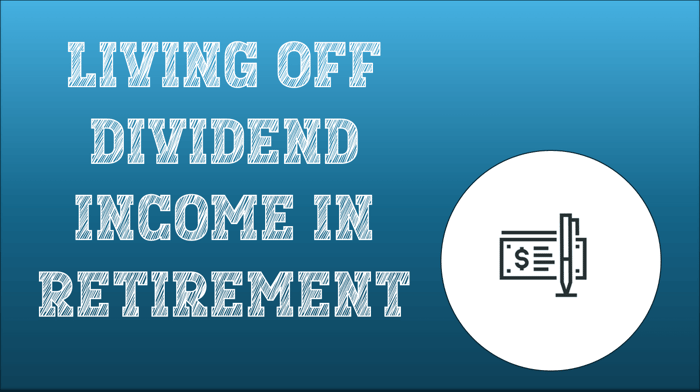A Bond Ladder Matches Income To Your Financial Needs.
When planning your retirement, determining how much money you need to live on in each year is a challenging task. One possible solution is called a bond ladder. A bond ladder is a portfolio of bonds that mature each year to match income to your financial needs in that year. Upon maturity, the total value of the bond is cashed out, and the income is used to cover your retirement expenses.
How a Bond Ladder Works:
At the time of purchasing the bonds for your ladder, the maturity dates are staggered so that each bond matures in consecutive years. How many years or rungs in your bond ladder depends on your financial needs. Let’s look at an example.
Bond Ladder Example:
Joe is 62 years old and plans on retiring next year. He has calculated his living expenses and has determined that he’ll need $80,000 per year in income.

However, Joe has decided to defer collecting Social Security benefits until he’s 70 years old. As a result, there’s a 7-year gap with no income. To fill the gap in income, Joe has decided to invest in a bond ladder.
To create Joe’s ladder, he purchases 7 bonds, each worth $80,000. Every year for 7 years, one bond matures and is cashed out to cover his expenses.
Year one would have a bond with a one-year maturity that pays an interest rate or yield. Year two would have a two-year maturity and yield and so on. Each year, Joe is paid the original value of the bond plus interest or yield for that particular bond’s maturity.
At age 70, the bond ladder finishes and Joe begins collecting his Social Security benefits.
Benefits To A Bond Ladder
Provides A Bridge To Social Security:
As stated earlier, the maturity dates that form the duration of the ladder can be customized to fill in gaps in years where you have no income. For example, if you decide to defer Social Security benefits until a later date, the bond ladder can be very helpful in providing you the necessary income until the benefits begin.
Predictable Cash Flow In Retirement
The staggered maturity dates of the bond ladder allow you to plan more effectively for your retirement needs. The amount invested in each rung of the ladder is established in advance allowing you to manage your cash flow for each year. As a result, your income is predictable and steady.
Determining how much income you need in each year for your retirement can be challenging. I find it helpful to break up your spending into two categories:
- Need Spending is the money you need to cover your living expenses in retirement. Need spending can include food and housing expenses for example.
- Want Spending is the money to be used for the items you want to buy. Maybe you want to go on a trip overseas.
By breaking up your spending into both need and want spending, it helps you to determine how much money should be included in each year or rung of your bond ladder.
The bond ladder is designed for your need spending. By focusing on your need spending, you can be assured that your money will be available in every year of your retirement. However, a bond ladder can also contain different amounts in certain years. If in year three, for example, you estimate that you’ll need to pay for one-time home repairs, you can allocate money for that year when constructing the ladder.
In short, a bond ladder can be customized to your financial needs in any given year and provide you a predictable source of income for as long as the ladder exists.
Income Security With A Bond Ladder
There are various types of bond investments in the market today. Some bonds fluctuate in value leading up to maturity, while other bonds maintain their value at maturity. Bonds that are backed by the U.S. Treasury Department are the only ones that are guaranteed.
With a bond ladder, you can allocate money for each year so that it’s guaranteed to be there when the bond matures. Regardless of whether the market goes up or down, or whether interest rates rise or fall, when the bonds in your ladder mature, you will receive the value of your bond for that year.
With a bond ladder, it’s important to remember that you’re buying bonds and holding them until maturity. When each bond matures, you’ll redeem the entire original value of the bond to cover your need expenses.
However, if a bond ladder is created with bond mutual funds, your original investment amount is not guaranteed to be available at maturity.
With bond mutual funds, the value of each bond in the fund fluctuates because bonds are bought and sold in and out of the fund until the maturity date. In other words, as the bond market and interest rates rise and fall, bonds are either being added or sold to take advantage of market conditions. Because of this trading activity, the bond mutual fund’s value fluctuates along with the market. As a result, the amount you receive when the fund matures is not guaranteed to be the same amount you invested.
Let’s revisit our example and let’s say Joe invested $80,000 in an individual Treasury bond to mature in year one of his ladder, but he invested $80,000 in a bond mutual fund to mature in year two. And let’s assume market conditions worsened since creating the bond ladder.
At the end of year one, Joe is guaranteed his $80,000 plus interest. However, at the end of year two, since the bond market moved against Joe, his bond fund is now only worth $70,000. Joe’s wealth declined due to adverse market moves because the bond fund at maturity wasn’t a guaranteed fixed amount.
It’s important when constructing your bond ladder that you consider investing in bonds that are guaranteed. Remember, the ladder is for need spending, so the money you invest has to be there to pay your expenses in retirement.
Drawbacks To Bond Ladders:
There are a few drawbacks to bond ladders that you should be aware of before making your investment decision.
Miss Out On Rising Interest Rates
Because you’re purchasing your entire bond ladder on day one, your bonds are paid a fixed yield or rate of return until maturity. If interest rates rise between day one and year three, for example, you miss out on the higher rates. Conversely, if interest rates go down during the life of your ladder, you still collect your original yield. In other words, regardless of whether rates go up or down, you are paid the original rate of the bond at maturity.
Upfront Commitment Associated With A Bond Ladder
As stated earlier, on day one, you are purchasing all of the bonds needed to cover your expenses in each year or the rungs of your ladder. The upfront financial commitment can be seen as a drawback to some investors.
Types Of Bonds To Create Your Ladder
There are a myriad of options available to you in creating your bond ladder. We’ll touch on only a few of the most common and effective ones.
Treasury Inflation Protected Securities or TIPS
TIPS are U.S. Treasury bonds that are designed to protect investors against inflation. As inflation rises, TIPS adjust with rising prices, increasing your principal to offset the negative effects of inflation. Also, TIPS have zero-default risk since they’re backed by the U.S. Treasury. TIPS come in various maturity dates and can easily be matched to your financial needs in any given year. TIPS are considered the gold standard for creating bond ladders since your money is guaranteed to be there when you need it.
Individual Corporate Bonds
Corporate bonds are another popular option when creating the rungs of your bond ladder. Although not guaranteed like TIPS, corporate bonds typically offer a higher yield than U.S. Treasuries. Corporate bonds are rated by agencies like Standard & Poor’s which determine the financial health of the company issuing the bond. A bond with a “AAA” rating is considered to have low default risk and is the highest rating a bond can receive.
Bond ETFs
Bond ETFs are funds that contain numerous corporate bonds with the same maturity date. The bond fund is an Exchange Traded Fund meaning the bonds are traded in and out of the fund to take advantage of market conditions and interest rate moves. There are certain types of bond ETFs available for purchase to match each maturity date in your ladder. Greater diversification is one of the chief benefits of a bond ETF since your investment is spread out over many securities. Although not guaranteed like TIPS, the diversification feature of Bond ETFs lowers the default risk of your investment.
Takeaways:
A bond ladder matches a series of bonds to the income stream you need in retirement. The ladder is highly customizable and creates predictable yearly cash flow to cover your need expenses. A bond ladder can also bridge the gap in the years leading up to when Social Security benefits begin.
There are many options available to you for creating the rungs or maturity dates of your bond ladder. Whether you invest in TIPS, corporate bonds, or Bond ETFs, or some combination of all three, a bond ladder can match an income stream to your financial needs in retirement.






